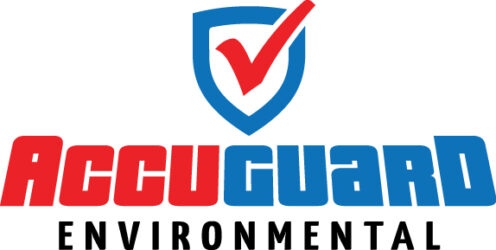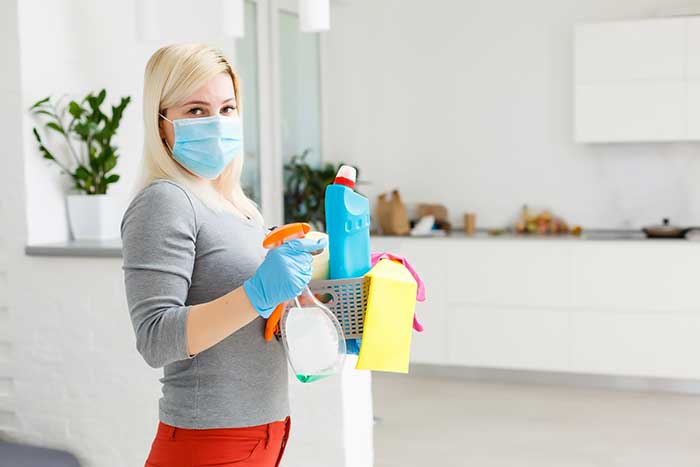Mold is a common problem that many homeowners face. Not only does it look unsightly, but it can also pose serious health risks if left unaddressed. On this page, you’ll find helpful ways to clean mold in your home, along with important considerations and potential dangers.
What You Can Use to Clean Mold
When it comes to cleaning mold, it’s crucial to use the right tools and products. Here are some options:
- Bleach:
– Available at most major grocery and hardware stores
– Active Ingredient: Sodium hypochlorite
– Usage: Effective against a broad spectrum of molds on non-porous surfaces only. Dilute according to instructions, and use caution as bleach can discolor surfaces. - Vinegar:
– Available at most major grocery stores
– Active Ingredient: Acetic acid
– Usage: Mildly acidic and suitable for non-porous surfaces. Is a more natural alternative to bleach. Use undiluted. - Hydrogen Peroxide:
– Available at most major grocery stores
– Active Ingredient: Hydrogen peroxide
– Usage: Effective against mold and mildew. Can be used on various surfaces. Breaks down into water and oxygen. - Ammonia:
– Available at most major grocery and hardware stores
– Active Ingredient: Ammonia
– Usage: Effective against mold and mildew, especially on non-porous surfaces. Use in well-ventilated areas and avoid mixing with bleach. - Borax:
– Available at most major grocery and hardware stores
– Active Ingredient: Borax (sodium borate)
– Usage: Natural and effective against mold. Mix with water to create a cleaning solution. Suitable for porous surfaces. - Tea Tree Oil:
– Available at most major grocery chains (Wal-Mart, Target, Fred Meyer, etc.)- Active Ingredient: Tea tree oil (melaleuca)
– Usage: Natural antifungal properties. Effective against some types of molds. Mix with water and apply to surfaces. - Concrobium Mold Control:
– Available at most major hardware stores
– Active Ingredient: Sodium bicarbonate (baking soda)
– Usage: Effective against mold and mildew. Forms a barrier to prevent future growth. Can be used on various surfaces. - Tilex Mold and Mildew Remover:
– Available at most major hardware stores
– Active Ingredient: Sodium hypochlorite
– Usage: Specifically formulated for bathroom surfaces. Effective against mold and mildew stains. - Lysol Mold & Mildew Blaster:
– Available at most major hardware stores
– Active Ingredient: Quaternary ammonium compounds
– Usage: Formulated to remove mold and mildew stains. Suitable for various surfaces. - Zep Mold Stain and Mildew Stain Remover:
– Available at most major hardware stores
– Active Ingredient: Sodium hypochlorite
– Usage: Designed to remove mold and mildew stains from surfaces. Follow instructions for proper dilution.
Keep in mind that none of these products can eliminate mold completely, but they can help you get that windowsill, cabinet, bath, or closet mold/mildew under control. When choosing a mold cleaner, it’s crucial to consider the affected material, the severity of the mold growth, and any specific instructions provided by the manufacturer.
Always follow the instructions provided by the manufacturer on the product label. Additionally, ensure proper ventilation when using mold cleaners, and take necessary safety precautions, such as wearing protective clothing and using gloves. If mold growth is extensive or if you are uncertain about the appropriate cleaner to use, consider consulting with professionals for mold remediation.
Common Places to Look for Mold
Mold tends to thrive in areas with moisture and poor ventilation. Some common places to check for mold include:
- Bathrooms: Pay close attention to areas around showers, tubs, and sinks.
- Basements and Crawl Spaces: These areas often have higher humidity levels and can be prone to mold growth.
- Kitchens: Check under sinks, near appliances, and around windows where condensation may occur.
Regularly inspecting these areas can help you catch mold growth early and prevent it from spreading.
The Dangers of Cleaning Mold the Wrong Way
Cleaning mold improperly can lead to unintended consequences. Here are a few dangers to be aware of:
- Health Risks: Mold releases spores that can trigger allergies, respiratory issues, and other health problems. Disturbing mold without taking proper precautions can cause these spores to become airborne, increasing the risk of exposure.
- Incomplete Removal: Simply wiping away visible mold may not eradicate the problem entirely. Mold can penetrate porous surfaces like drywall and carpet, requiring professional remediation to ensure complete removal.
What to Do About Mold You Cannot See or Access
Sometimes, mold can be hidden behind walls, under flooring, or in other inaccessible areas. In such cases, it’s essential to consult a certified mold inspector. These experts have the knowledge and tools to detect hidden mold and assess the extent of the problem.
A certified mold inspector can perform a quick survey of your home, providing expert advice about any mold present. They can offer customized recommendations on how to clean, restore, and maintain a clean, healthy, and safe living environment.
The Peace of Mind of a Certified Mold Inspection
While home remedies and DIY solutions may work for minor mold issues, having a certified mold inspector evaluate your home provides peace of mind. Their expertise ensures that all mold is properly identified and addressed, minimizing health risks and preventing further damage.
By investing in a professional mold inspection, you can take proactive steps to keep your home mold-free, ensuring a healthier living environment for you and your loved ones.
Remember, when it comes to mold, it’s crucial to act promptly, seek professional guidance, and prioritize the health and safety of your home.

